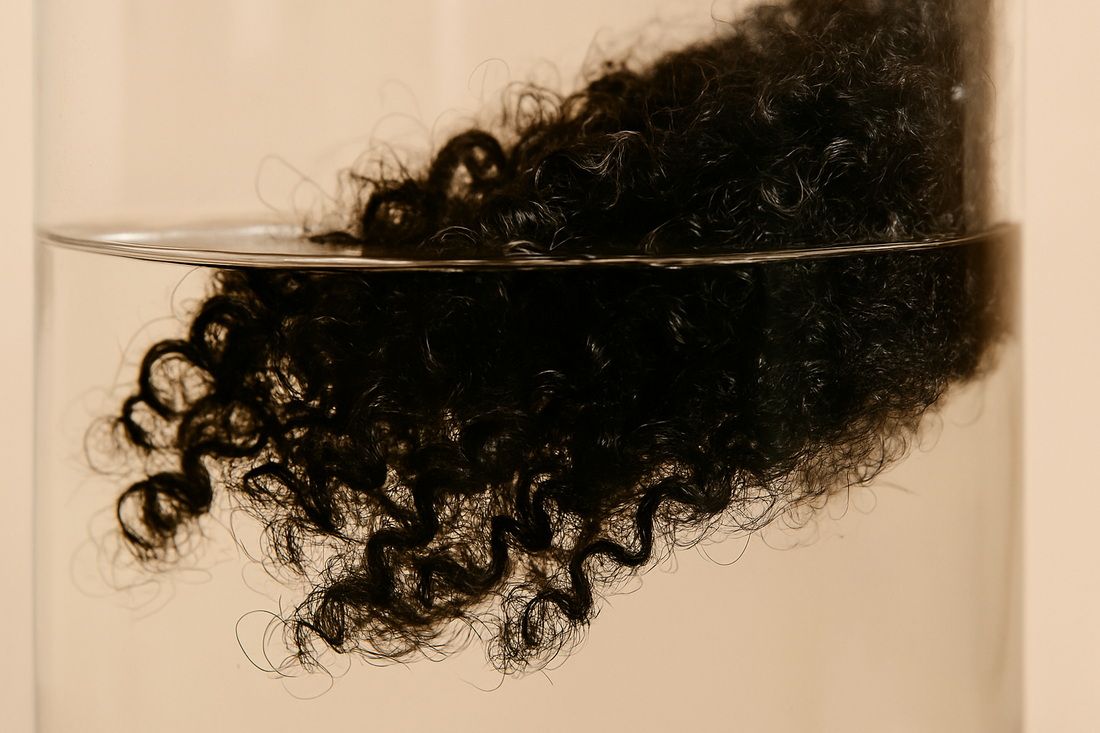Hair porosity refers to your hair’s ability to absorb and retain moisture. It’s one of the most important elements in building an effective hair care routine especially for curly, coily, and kinky hair, which tends to be naturally dry.
Porosity levels are classified as low, medium, or high. The ideal scenario? Medium porosity, also called “normal porosity” which allows hair to absorb moisture and retain it without too much difficulty.
The levels of hair porosity
Low porosity: cuticles are tightly closed → hard to absorb moisture
Medium porosity: balanced absorption and moisture retention
High porosity: cuticles are wide open → absorbs moisture fast but loses it just as quickly
How to do a porosity test (water test)
Knowing your hair’s porosity is essential if you want to understand what your hair truly needs. It explains why some products work wonders for you, while others do nothing at all.
Here’s how to try it at home:
- Wash your hair with a gentle shampoo (no conditioner or styling product)
- Let it air dry naturally
- Place a few clean strands into a glass of room temperature water
- Observe what happens after a few minutes

Interpreting the results + What to do
The strands float on the surface → Low porosity
Your cuticles are tightly packed. This makes it difficult for water or products to penetrate your hair shaft. Your hair may appear shiny or even healthy, but it’s often dry, resists moisture, and takes a long time to fully wet or dry.
Tips for low porosity hair:
- Use a clarifying shampoo once a month to remove buildup
- Add gentle heat (like a warm towel or steamer) during deep treatments to open the cuticles
- Rinse your hair with warm water to help products absorb
- Apply styling products or oils using a spray bottle while your hair is still damp
- Choose lightweight oils like almond, jojoba, or avocado oil
The strands float in the middle → Medium porosity
This is the sweet spot! Your hair absorbs and retains moisture effectively. It generally feels soft, manageable, and responds well to most treatments and styles.
Tips for medium porosity hair:
- Stick to a balanced routine alternating hydration and nourishment
- Protect your hair from extreme sun, humidity, or cold
- Avoid over-processing and minimize the use of heat
The strands sink to the bottom → High Porosity
Your cuticles are widely open often due to heat damage, chemical treatments, or genetics. Water and products are quickly absorbed but also evaporate just as fast. High porosity hair tends to feel dry, frizzy, or brittle.
Tips for high porosity hair:
- Use protein-rich masks and Ayurvedic powders like amla, hibiscus, or fenugreek.
- Choose a moisturizing shampoo to help close the cuticle layer.
- Rinse with cold water, or do a final rinse with apple cider vinegar or lemon juice to help seal the cuticle.
- Seal moisture with heavier oils (castor, olive) or butters (shea, mango).
- Include strengthening products once or twice a month.
Why does porosity matter?
Because it helps you:
- Avoid ineffective products.
- Build a realistic, manageable routine.
- Improve hair health and retention over time.
Knowing your porosity is the foundation of a smart, customized hair routine.

